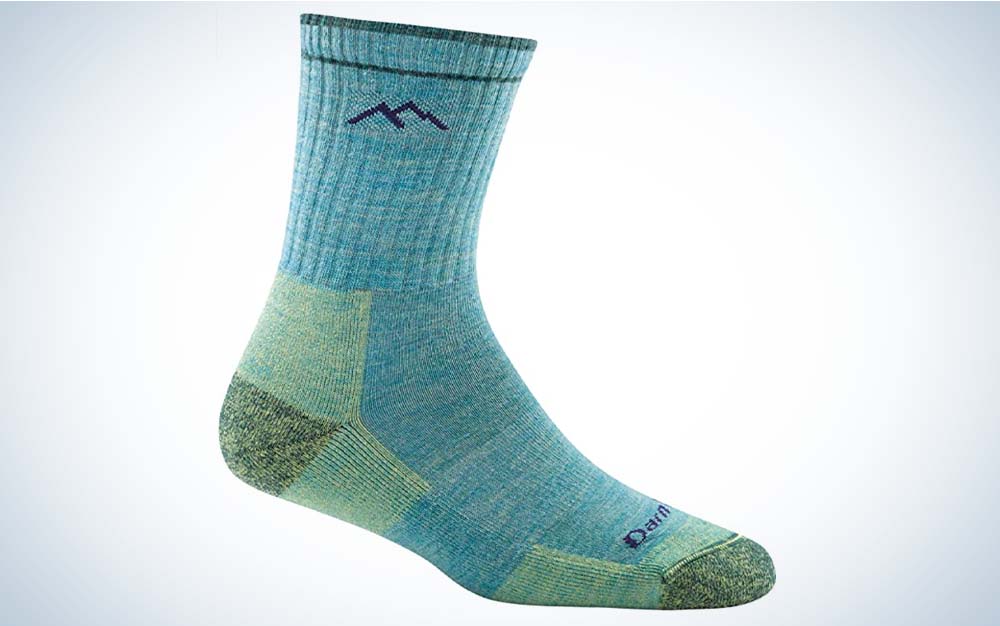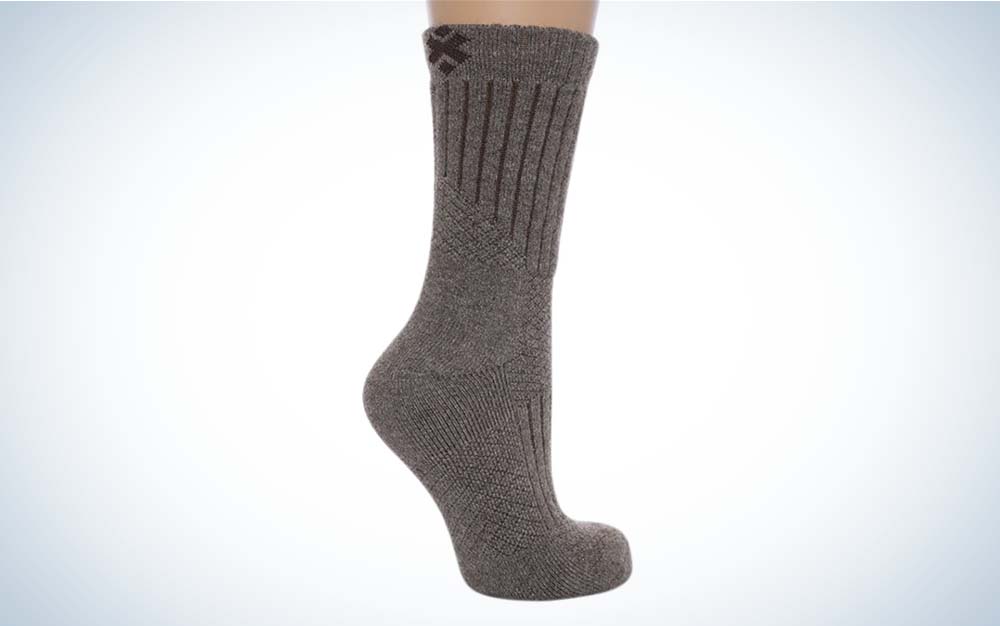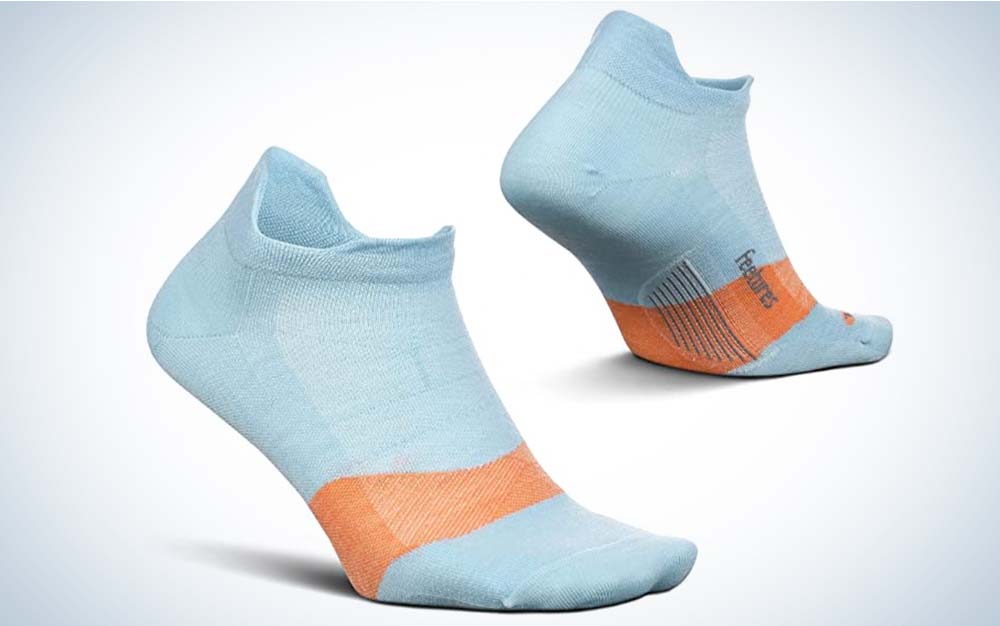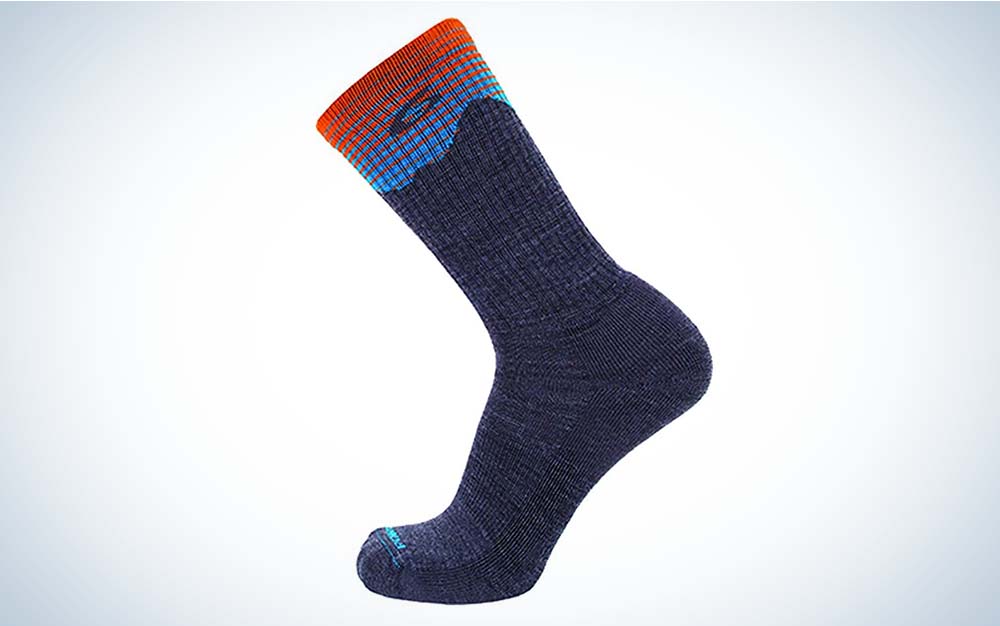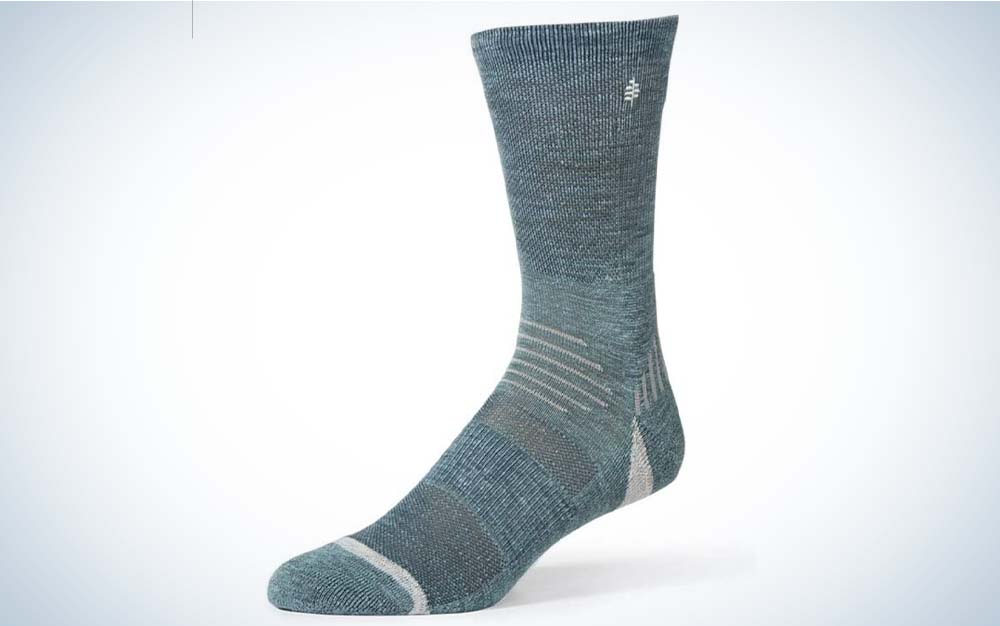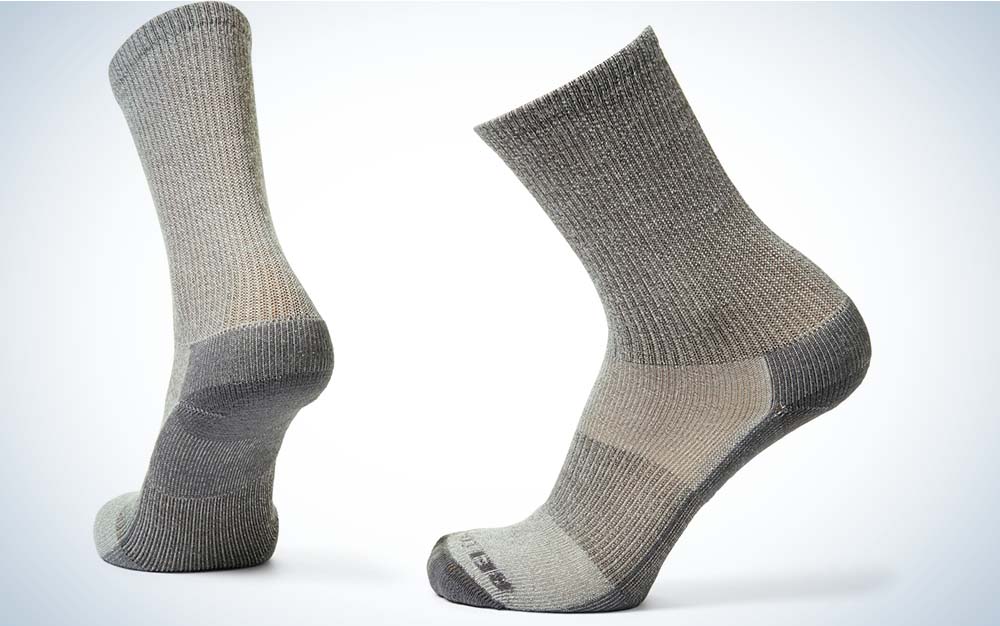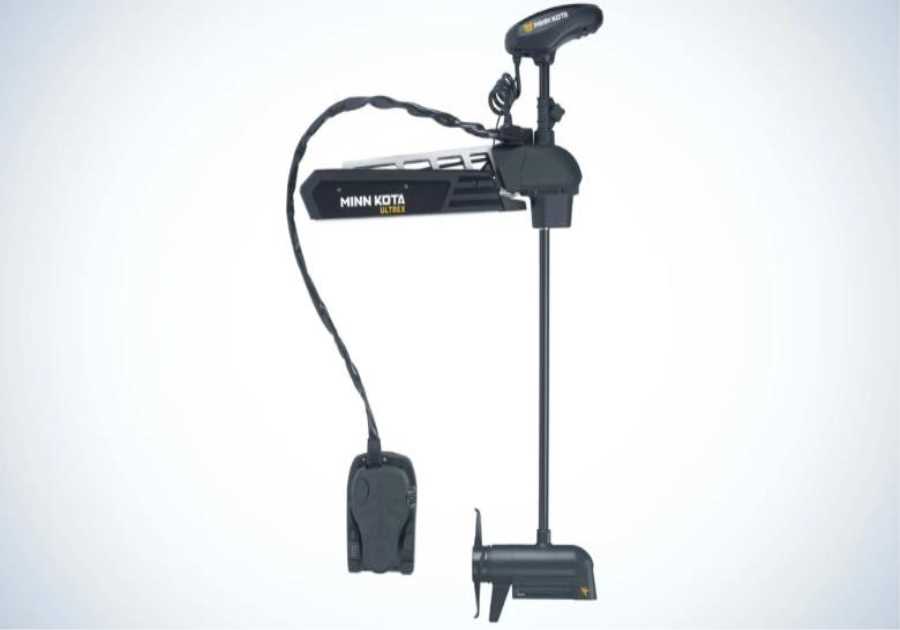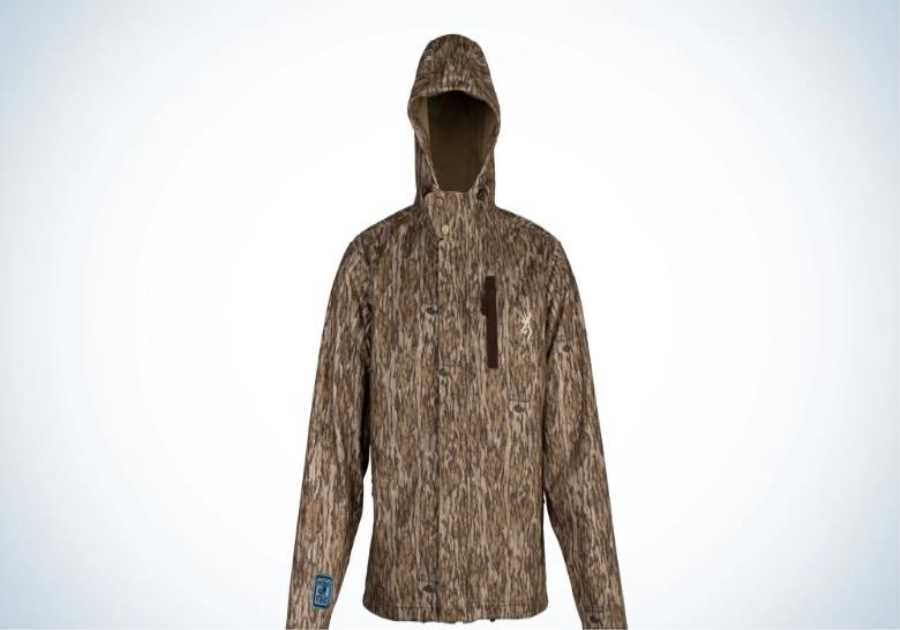||
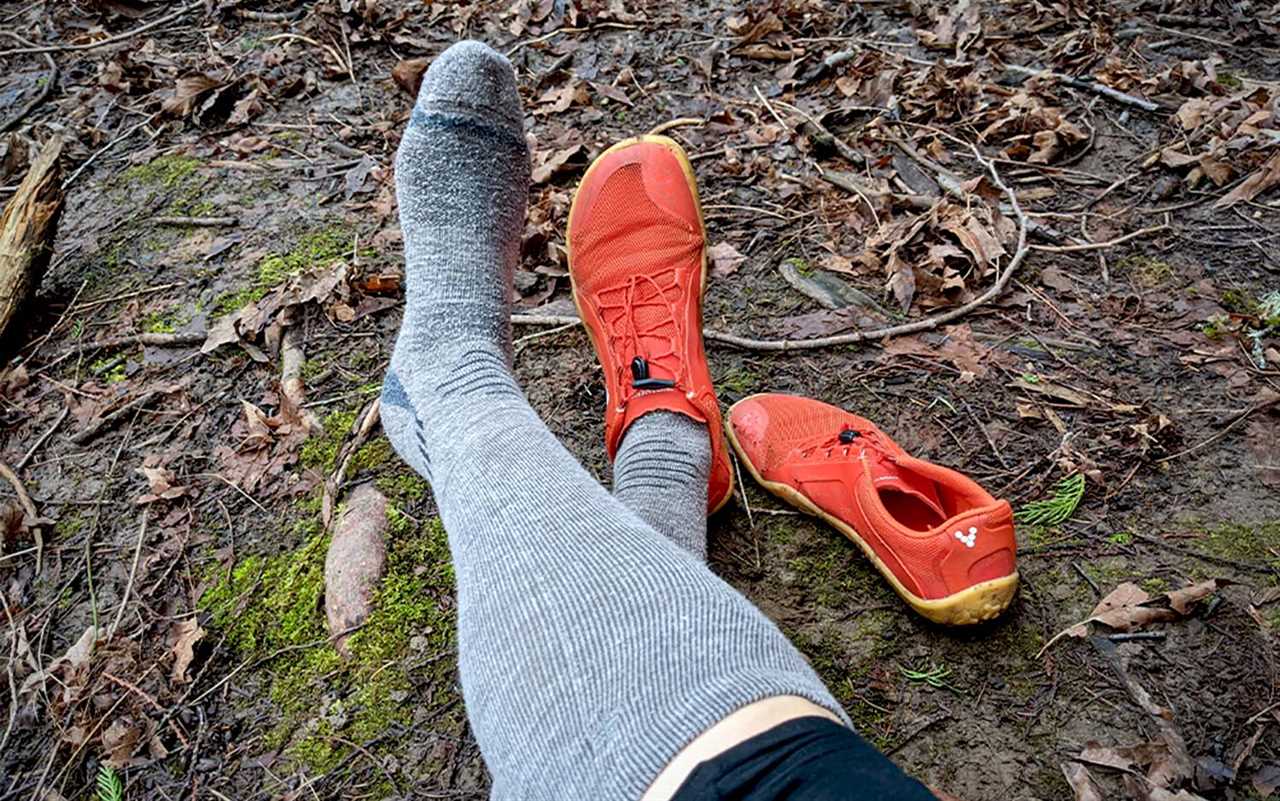
| Best Overall |
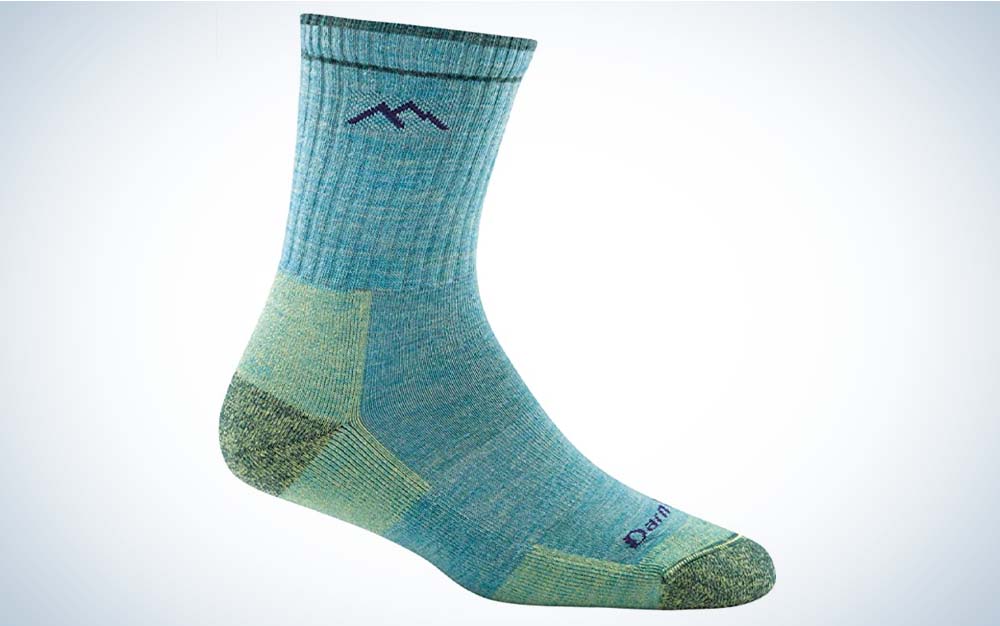
|
Darn Tough Hiker Micro Crew Midweight Hiking Sock | Check Price |
LEARN MORE
|
Summary
A durable, moisture-wicking, all-around quality hiking sock. |
| Best for Moisture Management |
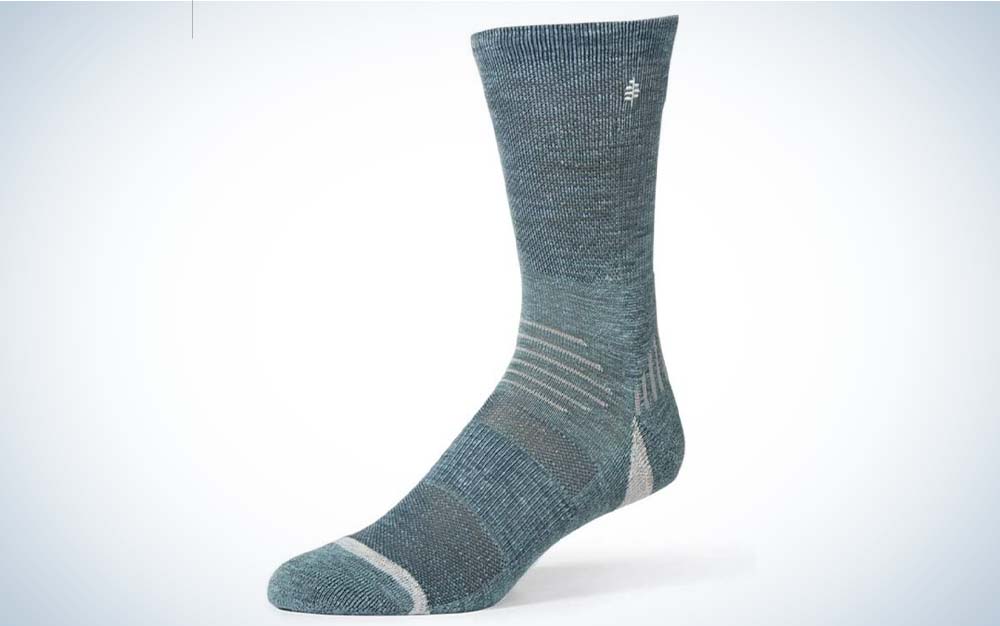
|
Royal Robbins Venture Crew Sock | Check Price |
LEARN MORE
|
Summary
The best sock for keeping feet dry and cool on hot days. |
| Best Budget |
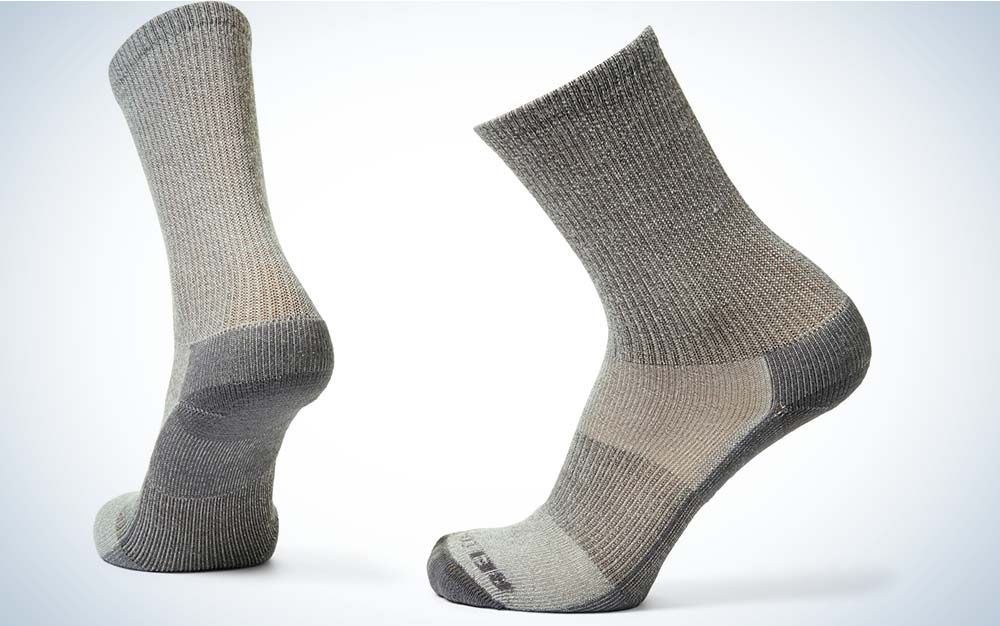
|
REI Co-op Merino Wool Ultralight Crew Hiking Socks | Check Price |
LEARN MORE
|
Summary
High-quality merino at an affordable price. |
It only takes one blister on the back of your heel to discover the importance of a good hiking sock. More than almost any other piece of gear in your kit, a quality hiking sock can make the difference between a fun day on the trail with friends and a crippling sufferfest that no amount of moleskin can fix. To help you avoid such a sufferfest, testers and myself tried socks on everything from day hikes to thru-hikes across the country to find the best hiking sock for your next adventure.
- Best Overall: Darn Tough Hiker Micro Crew Midweight Hiking Sock
- Most Comfortable: Happy Yak The Purist
- Best No-Show: Feetures Merino 10 No Show Tab Cushion
- Best for Rugged Conditions: Point6 37.5 Hiking Peak Light Cushion Crew
- Best for Moisture Management: Royal Robbins Venture Crew Sock
- Best Budget: REI Co-op Merino Wool Ultralight Crew Hiking Socks
Things to Consider Before Buying Hiking Socks
While it’s tempting to grab any old pair of socks out of your drawer before hitting the trail, most socks designed for frontcountry life aren’t suitable for outdoor adventures. But sifting through all the different sock styles, from no-show to knee-high, and materials—merino wool, nylon, acrylic, spandex, Tencel, rayon, and more—can make the process of finding the best hiking sock daunting. Here are a few factors to consider before choosing a pair for your next hike.
Comfort
What makes for comfortable feet out on a hike can vary considerably. I considered a number of factors in the below picks, from moisture management (for hikers with sweaty feet), to merino alternatives (for hikers with wool allergies), to the quality of construction.
Conditions
There are very few climates where you’ll be able to get by with only one type of hiking sock for every season—for most, you’ll want to consider the types of conditions you’ll encounter before making a purchase. In the Pacific Northwest, for example, the mud and fog of the fall call for a sock that can keep the grit and grime out, while excellent moisture wicking is necessary during the hot and dry months of late summer.
Longevity
All hiking socks give out eventually, but some last considerably longer than others. The most durable socks are typically less soft and more expensive, so consider how important each of these factors are to you when making your selection.
Price Point
While an individual pair of hiking socks is (usually) affordable, small differences in price can add up when you need multiple pairs. That being said, I recommend aiming for a sock in the $20-$25 range for everyday hiking, as the lifespan of these higher quality hiking socks usually justifies the higher price tag.
Best Hiking Socks Overall: Darn Tough Hiker Micro Crew Midweight Hiking Sock
Key Features
- Materials: 61% merino wool, 36% nylon, 3% Lycra spandex
- Cushion level: Medium
- Height: Low calf
Why It Made the Cut
I’ve hiked thousands of miles in Darn Tough’s hiking socks, across deserts, rocky trails, and snowy mountain passes, and they’re still my number one go to.
Pros
- Lifetime warranty
- Durable enough for a thru-hike
- Wicks moisture well in all conditions
Cons
- Might feel scratchy to people with sensitive skin
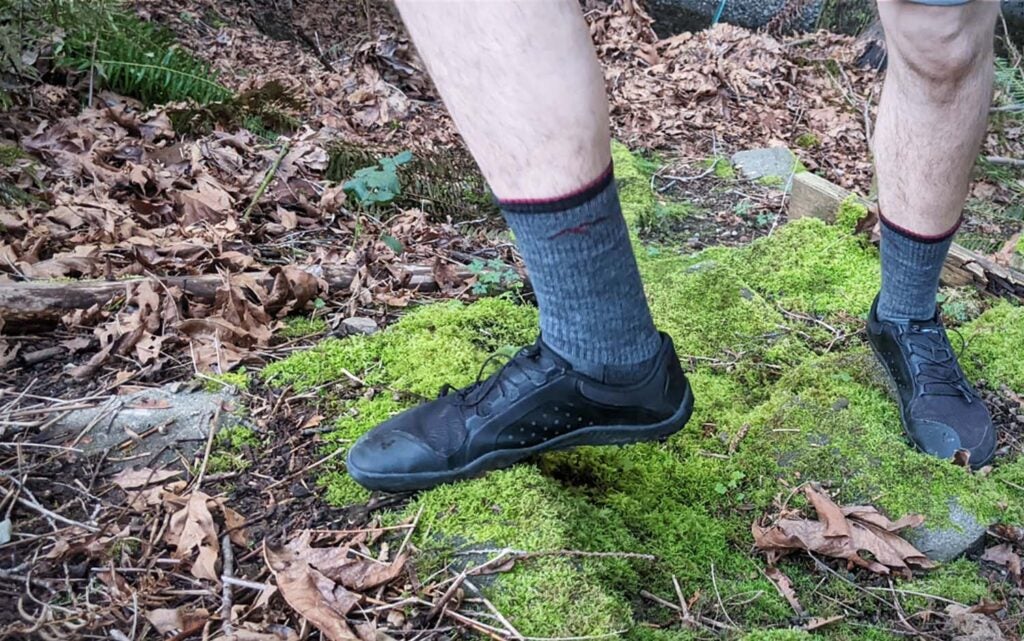
Product Description
Darn Tough’s hiking sock has been the standard bearer for hiking socks for years, and they are still at the top of my list. The balance of merino wool—which both retains heat and wicks away moisture—with nylon’s durability, keeps my feet hot-spot free and comfortable on day hikes and thru-hikes alike. Since wool contains lanolin, a natural antimicrobial, the stink factor stays down on trips where even creekside rinses aren’t an option. The Lycra spandex provides just enough stretchiness to keep these socks from slipping down on high-mileage days.
I’ve worn these socks everywhere from the San Juans of Colorado to the Mojave in California to the temperate rainforest of Olympic National Park, and it performs equally well in all conditions. And when they did eventually blow a hole in the back heel after a thousand miles or so of use, Darn Tough’s Lifetime Warranty means you’re always covered.
Most Comfortable Hiking Socks: Happy Yak The Purist
Key Features
- Materials: 80% yak cashmere, 20% acrylic
- Cushion level: Medium
- Height: Mid-calf
Why It Made The Cut
The Purist is the most comfortable sock I’ve ever tried, yet it has the chops to handle major backcountry expeditions. These are especially well-suited for winter or shoulder-season trips.
Pros
- Next-level comfort
- Retains heat better than similar-weight merino socks
- Wool alternative for those with allergies
Cons
- Less durable than other socks
- Pricey
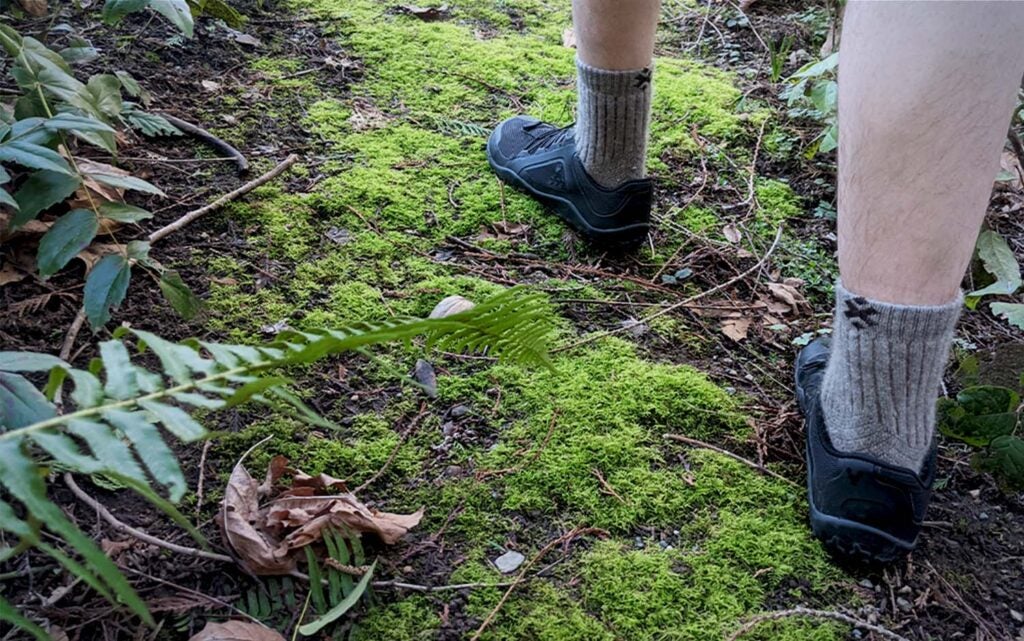
Product Description
The Purist turned me from a merino die-hard to a yak cashmere evangelist. Whereas wool fibers are naturally scaly, yak cashmere—the fancy term for the hair that is closest to the yak’s body—are smooth. They’re also completely hollow, trapping warm air inside to warm your feet and (merino fibers are semi-hollow) stay warmer for longer.
I tested these socks on a 250-mile section of the Colorado Trail, and they kept my feet warmer than wool socks and wicked moisture equally well. The only ding was that they were showing more signs of wear than my other hiking socks (although not enough to be retired from rotation). For those looking for the performance benefits of yak cashmere with greater durability, Happy Yak makes The Adventurist, which incorporates nylon. Air drying these socks also helps improve their lifespan (which you’re doing for your on-trail hand washes anyway, right?).
The only thing keeping The Purist from taking over my sock drawer is the high price ($55 at the time of testing). For that reason, this sock usually stays in my pack until the last day of a trip, when my feet need a little luxury to get through those final miles.
Best No-Show Hiking Socks: Feetures Merino 10 No Show Tab Cushion
Key Features
- Materials: 43% nylon, 28% wool, 27% Tencel, 2% spandex
- Cushion level: Medium
- Height: No show
Why It Made The Cut
The Feetures Merino 10 No Show stays in place on rocky trails runs and sweaty ascents. The tester’s feet also felt fresher than average after all-day sufferfests.
Pros
- Doesn’t slip
- Great moisture management
- Light compression at the arch helped reduce fatigue
Cons
- Too warm for year-round use
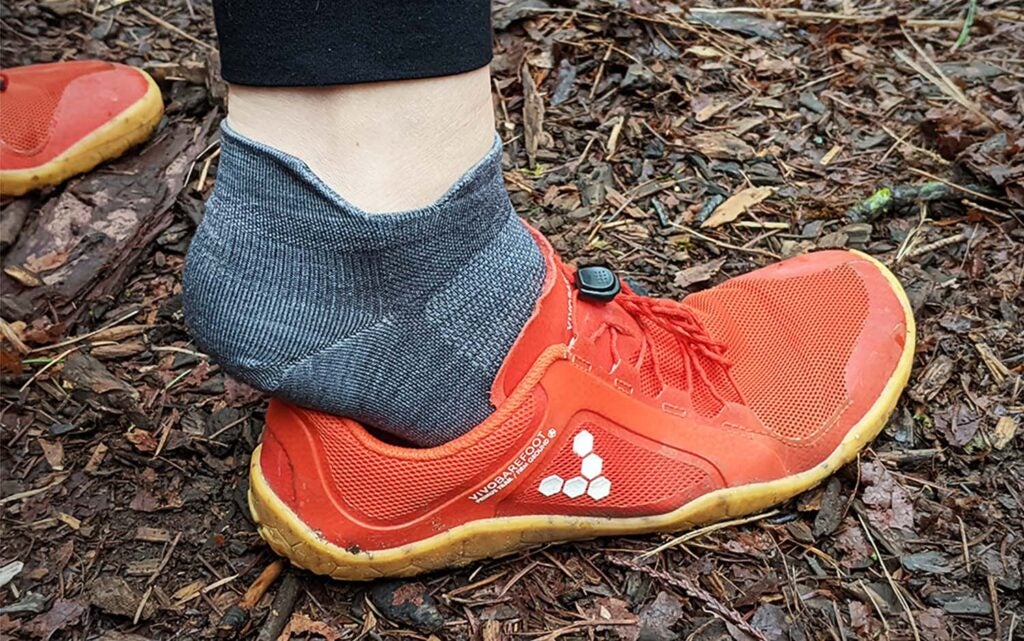
Product Description
Feetures’ Merino 10 is one of the few no-show socks that actually stays in place on all-day adventures, without slipping under the arch or tugging on the tab. The secret here is extra spandex woven into the arch for a fitted feel that, I was happy to discover, also helped my feet feel fresher over the long haul. The merino and thin weave ensured that moisture wicked out as soon as it built up and kept one tester’s feet dry on a drizzly day in muddy conditions.
This sock has a high nylon percentage, which makes it unusually durable. It only showed slight fraying under the balls of the foot and at the toes (back of the heel looks like new) after a full season of use in the Oregon Cascade Range. The tester said that this sock was just a hair too thick to wear on blistering trail runs during the height of summer, but that their feet appreciated the padding during the rest of the year.
Best Hiking Socks for Rugged Conditions: Point6 37.5 Hiking Peak Light Cushion Crew
Key Features
- Materials: 54% wool, 40% nylon, 6% elastic
- Cushion level: Medium
- Height: Mid-calf
Why It Made The Cut
The Point6 37.5 series wicks as well as thinner socks with less cushioning and performs well in the most rugged conditions.
Pros
- Endures the most rigorous trails
- Keeps feet dry and blister free in hot conditions
- Hold their shape well on multi-day trips without washing
Cons
- Less comfortable skin-feel than other socks on this list
Product Description
Keeping your feet dry during the heat of summer is one of the most important things you can do to keep blisters at bay. Usually, that means choosing a thin sock so heat isn’t trapped next to your skin. But these midweight socks buck the trend by incorporating carbon (from volcanic ash, of all things) into the knit to speed up the natural wicking properties of the already high merino wool content—which made these some of the least smelly socks I’ve tested.
I was also impressed by this sock’s durability. One pair of 37.5s got an unfortunate first hole when a perfectly positioned stick jammed through the undersoles of a tester’s shoes during a trek through Southern California. Rather than ditch them for a new pair, they took a stroll for another 150 miles. That hole never got any bigger, so they kept the socks.
Best Hiking Socks for Moisture Management: Royal Robbins Venture Crew Sock
Key Features
- Materials: 56% polyester, 37% hemp, 7% elastane
- Cushion level: Light
- Height: Mid-calf
Why It Made The Cut
No sock kept testers’ feet drier on hot days than the Venture. And its unusual texture made it a surprise hit on hikes where their feet took a beating.
Pros
- Excellent wicking ability
- Textured feel is surprisingly refreshing
- Hemp is an eco-friendly wool alternative
Cons
- Holds onto more dirt and grime than other socks
- Prone to pilling
Product Description
Hemp is not a traditional fiber for hiking socks, but the Venture Crew shows that maybe it’s time for that to change. On a humid overnight in Nebraska when the mercury broke 90, these socks kept the sweat away from one tester’s skin better than their merino counterparts. This is because the channels running down the fibers help move sweat away from the body unlike merino.
The texture on this sock is hard to describe. It isn’t soft—at times, it almost felt like it was exfoliating my skin—but it ranked high for comfort compared to traditional wool socks and ended up as a top choice to take on a section of the Pacific Crest Trail. My only complaint is that trail debris tends to hang onto the cuffs on longer treks, making trail laundry more of a chore than I’d like.
Best Budget Hiking Socks: REI Co-op Merino Wool Ultralight Crew Hiking Socks
Key Features
- Materials: 72% wool, 26% nylon, 2% Lycra
- Cushion level: Light
- Height: Mid-calf
Why It Made The Cut
These socks show the performance of merino doesn’t have to come at a premium cost, and the durability rivals many of the higher priced socks I tested.
Pros
- Low price given the high merino content
- No smell, even on longer trips
Cons
- Started to lose their shape after consecutive days of use
- Not as soft as other socks in the test
Product Description
It’s tough to find a pair of high-quality merino socks for under $20, but I found during testing that the REI-branded merino wool socks ($16 at the time of testing) were just as good as many higher priced options. The bulk of the performance benefits comes from the high-wool content, which increases the sock’s ability to wick, retain heat on cold days, and avoid unwanted odors. And vents at the top of the sock and cushioning on the underfoot kept my feet happy and blister-free on longer slogs.
This sock is billed as an ultralight, but its thickness is closer to that of a lightweight sock. The price point also comes with some tradeoffs, as these socks tend to bag out after heavy use and are noticeably less soft than the higher-priced pics on this list. Still, I wouldn’t hesitate to throw them on my feet or in my pack for dayhikes or overnight trips.
FAQs
Q: How much do hiking socks cost?
Hiking socks can cost anywhere from $10 to $60, but the best hiking socks are typically around $20 to $25. Less than that and you are likely to run into durability issues, and you may notice more blisters than you would have otherwise seen. Higher priced socks typically come with extra cushioning, a specialized fiber (like my yak cashmere pick), fine-gauge merino wool, or some other unique performance benefit.
Q: What type of sock is best for hiking?
The best type of sock for hiking is one that wicks away moisture from your feet, as wet feet are prone to developing blisters—this is why the best hiking socks are almost never made out of cotton, which retains moisture. The go-to fiber for moisture wicking is merino wool, which has the added benefit of being naturally antimicrobial (so your feet are less likely to smell), but synthetic fibers can work just as well.
Q: What are good summer hiking socks?
The best hiking socks for summer are the ones that will keep your feet dry. They can accomplish this by being unusually thin, so that moisture can escape easily, incorporating fibers that wick away moisture well, such as merino, or a combination of both. Something to consider is that in places where the ground heats up significantly during summer, such as the desert, thicker hiking socks can help prevent heat blisters from developing on the underside of your feet.
Q: What are the best hiking socks for sweaty feet?
The best hiking socks for sweaty feet are the ones that wick away moisture quickly. Look for socks with a high percentage of merino (or a synthetic that is designed for wicking), and consider what kind of shoes you are planning to pair them with. If you are wearing trail runners, where moisture can easily escape, thinner socks may work better to keep your feet dry. In traditional hiking boots, which can become swampy in hot conditions, thicker hiking socks can help provide a buffer between your feet and the sweat wicking to the outside of the sock.
Q: What are the most comfortable hiking socks?
To find the hiking socks that will be the most comfortable, first consider your conditions. For cold-weather hiking, it’s best to choose heavyweight socks, while a midweight or lightweight sock would be more appropriate for the summer. If conditions are muddy or buggy, a crew height can help protect your legs. And if there are any stream crossings on your upcoming hike, the most comfortable socks will be the extra pair tucked into your pack.
Thin socks can be good for hiking in the right conditions. If you are wearing lightweight, cushioned shoes (such as trail runners) on a hot day, thin socks will wick away moisture faster than thicker socks. But if you are wearing hiking boots or low-cut hiking shoes, which tend to be made out of stiffer materials, you may find that the cushion provided by thicker hiking socks keeps your feet comfortable for longer and results in fewer blisters.
Methodology
I’ve tested dozens of socks from major brands like Balega, Swiftwick, Thorlo, Lorpen, Wigam, Royal Robbins, Farm to Feet, Icebreaker, Injinji, Orvis, Fox River, Wrightsock, and more. To find the best of the best, testers and myself have taken the best hiking socks on everything from dayhikes to trail runs to thru-hikes in a variety of climates and regions, from the damp foothills of the Cascade Range to the arid chill of the Rockies and the blistering heat of the deserts of Southern California. For this review, I considered features such as durability, moisture management, comfort, and fit. These picks had hundreds, some thousands, of miles put onto them over the course of one or more seasons to provide unique insight into the lifespan of each.
Final Thoughts
The above best hiking socks are all great choices for dayhiking and overnighters. Some, like the Darn Tough and Point6 socks, I even pack for multi-night trips and thru-hikes. You’ll typically want multiple pairs of hiking socks, so I recommend buying several different kinds to see what works best with your feet, your shoes, and the types of hikes you typically go on.
The post Best Hiking Socks for 2022 appeared first on Outdoor Life.
||-------------------------------------
By: Laura Lancaster
Title: Best Hiking Socks for 2022
Sourced From: www.outdoorlife.com/gear/best-hiking-socks/
Published Date: Wed, 09 Mar 2022 14:31:03 +0000
.png)
